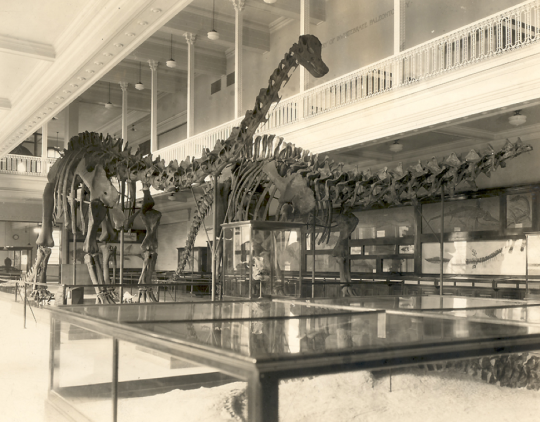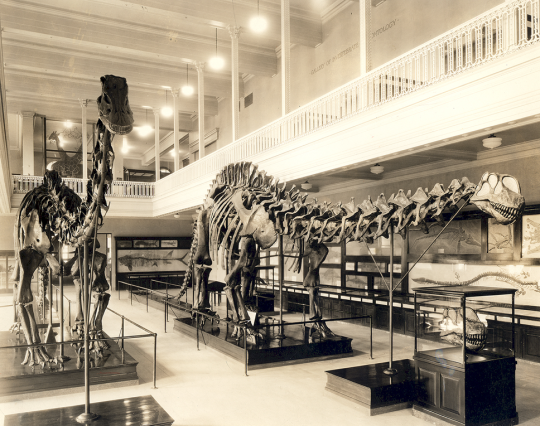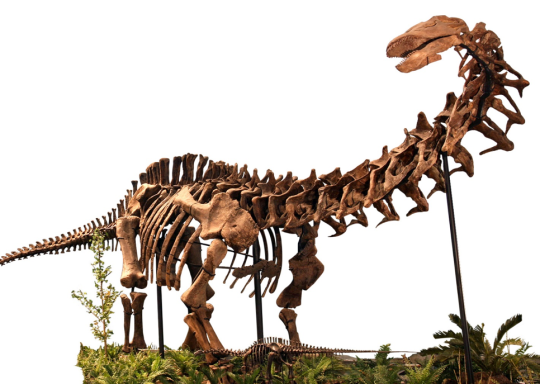Apatosaurus is a sauropod, or long-necked plant-eating dinosaur, that lived in western North America during the late Jurassic Period roughly 150 million years ago. In the early 20th century, scientists couldn’t agree on what kind of head Apatosaurus had. No skull had ever been found attached to a neck of this dinosaur. So, when Carnegie Museum of Natural History mounted its most complete Apatosaurus skeleton in 1915, it did so without including a skull.

The mount stood headless until 1932, when the museum followed prevailing scientific opinion of the day and placed a blunt-snouted, broad-toothed skull on the Apatosaurus. It remained there for another 47 years.

In 1978, however, Carnegie Museum of Natural History paleontologist Dave Berman and museum research associate Jack McIntosh reasoned that a very different, more Diplodocus-like skull found with the Apatosaurus skeleton back in 1910 was most probably the correct one. A subsequent discovery of a still-connected Apatosaurus skull and neck proved them correct. In 1979, the museum’s Apatosaurus louisae was finally fitted with its proper skull – more than seven decades after its discovery! It remains that way today, on public exhibit in the museum’s dinosaur gallery, Dinosaurs in Their Time.

Matt Lamanna is a paleontologist and the principal dinosaur researcher at Carnegie Museum of Natural History in Pittsburgh. Museum employees are encouraged to blog about their unique experiences and knowledge gained from working at the museum.
Related Content
Ask a Scientist: What kind of dinosaur was a megaraptorid?
Mesozoic Monthly: Dreadnoughtus
The Strange Saga of Spinosaurus, the Semiaquatic Dinosaurian Superpredator
